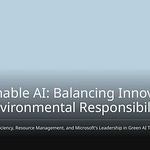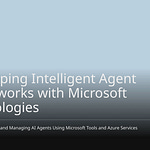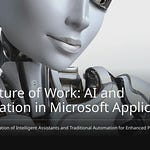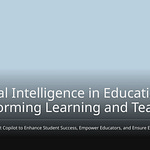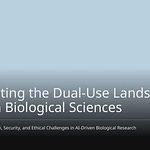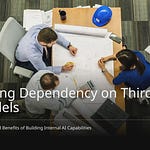New AI systems are getting harder. They need to know context and how things relate. They can’t just see patterns. Graph and knowledge systems help Microsoft AI understand more. A knowledge graph helps AI find hard connections. This blog shows how Microsoft uses these systems. They are in all its products. It also tells how they help with advanced AI.
Key Takeaways
Knowledge graphs help AI understand information better. They show how things connect in the real world.
Microsoft uses graph and knowledge systems in many products. This includes Microsoft Graph and Microsoft Academic Graph.
GraphRAG makes AI answers better. It uses knowledge graphs to give AI more context, especially for private data.
Microsoft AI services use graph systems. This makes tools like Copilot and Azure AI smarter and more personal.
Graph systems help AI think more like humans. They give AI context and memory, which makes AI more reliable.
Knowledge Graphs in AI
Defining Knowledge Graphs
A knowledge graph shows real things. It shows how they are connected. This network uses nodes. Nodes are like people, places, or ideas. Edges connect these nodes. Edges show how things relate. These relationships have meaning. For example, an edge can mean “works for.” Or it can mean “located in.” RDF triples are a basic unit. They have a subject, predicate, and object. This shows how one thing links to another. It uses a specific property. Computers can read this format. This helps with smart AI tasks.
Enhancing AI Understanding
Knowledge graphs make AI smarter. They help AI understand information better. AI can find connections. It can solve unclear parts. This goes beyond just finding patterns. AI understands meaning and context. Knowledge graphs add meaning to data. They use labels and descriptions. This extra info helps AI. It helps AI understand things. AI can use this knowledge. It can reason about data. It does not just get information. For example, in language, AI can tell the difference. It knows “Apple” the company. It knows “apple” the fruit. It looks at the text around it. It uses known connections. This structured way helps AI. It gives exact answers. It makes AI easier to understand.
Microsoft’s Graph and Knowledge Investments
Microsoft builds and uses graph and knowledge systems. They are in all its tech. These systems help make advanced AI work.
Microsoft Academic Graph
The Microsoft Academic Graph (MAG) is a big knowledge graph. It organizes school information. MAG uses text files. These files are for things like papers, authors, and schools. It also uses files for how these things connect. For example, it shows paper citations. Or it shows author-paper links. This big graph helps scientists. They can study scientific knowledge. They can make better ways to map school work. It also makes finding information easier. Professor Jevin West said it changed research. MAG keeps learning new ideas. It now knows over 700,000 study areas. About 75% fit into its study groups. This is three times more than in 2018. It shows MAG can sort new research better.
Microsoft Graph
Microsoft Graph is one system. It is an API and knowledge graph. It shows how users, files, and emails connect. This is across Microsoft 365. This system makes AI personal. When used with generative AI, Graph helps Microsoft Fabric. It makes AI answers more correct. It makes them easier to understand. It helps Large Language Models (LLM). It also helps AI agents think better. It gives details on what connects. It shows how things relate. It tells what else is important. This leads to better answers. It makes automated tasks safer. It helps tools work together better.
Microsoft Graph helps different users in Fabric. Business users can see connections. They can ask questions in plain language. These questions become graph searches. Analysts make patterns and filters. They use an easy search tool. They switch between views. This checks their results. Data engineers set up models. They link nodes and edges. They use OneLake data. They use easy tools. Then, they share good graph parts. Developers link AI agents to the graph. This helps make quick choices. It uses helpful information. Microsoft Graph works with OneLake. This is for storing data. It works with Power BI for showing data. It works with Microsoft Fabric’s rules. It works with security and operations. It lets you use graph analysis. This is in your daily work. You do not need to copy data. You do not need special skills.
Project Turing and Search
Graph and knowledge systems are key to Project Turing. This project makes language understanding better. It also improves semantic search. These systems help AI know what users mean. They do more than just find words. Project Turing uses these systems. It helps AI understand questions better. This gives more useful search results. It helps AI understand hard language.
GraphRAG and LLM-Generated KGs
Microsoft’s GraphRAG project helps answer questions. It uses LLM-generated knowledge graphs. This is good for private data. GraphRAG makes Retrieval Augmented Generation (RAG) better. It uses Large Language Models (LLM). It uses knowledge graph tech. This makes RAG better. It helps AI think. It makes answers more correct. It stops AI from making things up. This turns messy data into clear connections. It fixes problems. These are problems old RAG systems have.
GraphRAG has many good points. It gives more information. It looks through the knowledge graph. It finds connections. This shows hidden information. It makes sure info is right for the task. It sorts data for the user. It picks the most important info. GraphRAG also helps explain things. It shows how info connects. This helps trace how answers are made. It gives better proof. The graph mixes different kinds of info. This leads to better answers. These improvements help GraphRAG make answers. These answers are more correct. They are more useful. They are easier to trace. This is better than old RAG methods. GraphRAG combines word meaning. It combines structured thinking. This helps the LLM give better answers. They are deeper and traceable.
The LLM reads all private data. It finds all things and connections. These make an LLM-generated knowledge graph. This graph groups data. It puts data into meaning groups. This helps summarize ideas. When you ask a question, the knowledge graph helps. These meaning groups also help the LLM answer.
Initial results show that GraphRAG consistently outperforms baseline RAG on these metrics.
GraphRAG makes RAG‘s ‘retrieval’ part much better. It fills the context window. It uses more relevant content. This gives better answers. It also shows where info came from. It uses 26% to 97% fewer words. LinkedIn used GraphRAG. It helped customer service. Answers were more correct. They were richer. It cut problem-solving time by 28.6%. Data.world found GraphRAG improved LLM answers. It was 3 times better. This was for 43 business questions. GraphRAG also helps understand data better. It helps work faster. Knowledge graph structures are clear. You can see them. They show new ideas. They help build GenAI apps. They help fix them. They show a live picture of data. They help trace answers. This structured way helps new work. It helps fix problems. It lets you store more meaning. GraphRAG also explains better. It is easier to trace. It has better access rules. Knowledge graph structures show data clearly. Both people and machines can understand them. This structured way helps search data. It helps see data. It helps add notes. It helps fix data. It helps grow data. This makes management better. Old RAG struggles to link different info. It does not understand big data well. GraphRAG fixes these limits. It uses advanced analysis.
“By using the LLM-generated knowledge graph, GraphRAG vastly improves the ‘retrieval’ portion of RAG, populating the context window with higher relevance content, resulting in better answers and capturing evidence provenance.”
This analysis shows how GraphRAG uses LLM-generated knowledge graphs. It fixes common RAG problems.
Microsoft AI Product Applications
This part shows how graph and knowledge systems help Microsoft AI products. These systems make Microsoft products smarter. They make them more personal.
Cortana and Copilot
Cortana and Copilot are smart helpers. They use knowledge graphs a lot. These graphs help them understand questions. They help them do tasks. They help them offer help. Old voice helpers came out in the 2010s. These were Siri, Cortana, and Google Assistant. They got better at understanding people. They could guess what users needed.
New smart helpers use many new ways. They use NLU and NLP. NLTK and SpaCy are examples. Rasa and Microsoft Bot Framework guide talks. Deep learning helps with language. It uses RNNs and LSTMs. GPT and BERT are big models. They learn from lots of text. They understand language well. SimCLR helps them learn from unlabeled data. A strong knowledge system helps them. It uses knowledge graphs for connections. It uses GNNs for patterns. These helpers also use ASR and TTS. They use semantic search.
Microsoft 365 Copilot uses Microsoft Graph. It is a knowledge graph. It helps Copilot understand hard questions. The Graph links things in Microsoft 365. It shows how people, files, and talks connect. This includes calendars and emails. It includes documents and Teams chats. It also includes who can see what. When you ask Copilot a question, it checks the Graph. It finds useful info from your work. This is called ‘grounding’. It gives the LLM specific facts. This helps it give good answers. The grounded info and your question go to the LLM. The answer often shows where the info came from. This makes RAG better. It helps the AI give correct answers. GraphRAG ideas help Copilot. They help it find complex info. For example, Copilot can answer a question. “What happened in my finance meeting last week?” It gets info from calendars. It gets info from Teams recordings. It gets info from emails. It can write a first draft in Word. You just give it a simple idea. It can look at data. It finds trends. It makes charts. It suggests formulas in Excel. It can make a whole PowerPoint. It uses an existing Word document. It can sum up long emails. It can write replies in Outlook. It gives meeting summaries in Teams. It shows main points and tasks. Each of these needs a complex question. Each needs a smart RAG process. GraphRAG helps it understand context. This makes sure the LLM gives exact results.
Azure AI Services
Azure AI services use graph databases. They use knowledge representation. This is for many tasks. These include finding things. They include making suggestions. They include smart data work. Microsoft builds semantic tech. It uses knowledge graph ideas. This is across Azure AI services. It is also in Microsoft 365. This helps find knowledge in companies. It helps with AI insights.
Azure AI Search uses built-in skills. These skills help with NLP. They find entities. They find feelings. They find private info. These skills turn text into searchable fields. Knowledge graphs make AI models better. They add structured context. They work with LLMs. In RAG, knowledge graphs store links. These links are between things. This helps find more useful info. By adding background knowledge, NLP models work better. They are more accurate. This is for finding things. It is for finding links. It is for summarizing text. GraphRAG ideas are useful here. They use structured links for better RAG. This makes the LLM’s answers more accurate.
Azure Cosmos DB for NoSQL helps build AI knowledge graphs. It uses CosmosAIGraph. These graphs are key for suggestions. They are key for smart data work. They allow complex data models. They allow complex questions. CosmosAIGraph mixes different databases. It mixes traditional, vector, and graph. It works with AI. It manages complex data links well. It helps RAG. It uses structured links in a graph. This helps understand context. It helps with complex questions. This is good for personal content. The platform’s OmniRAG picks the best ways to find info. This includes looking through graphs. It answers user questions correctly. This RAG process uses GraphRAG ideas. It makes sure the LLM gets the best context. Azure Cosmos DB is one AI database. It supports many data types. These include graph, document, and vector. It also supports relational, key-value, and table. This makes it strong for AI apps. These apps are for suggestions. They are for smart data work. Each complex question uses this strong RAG system.
Microsoft 365 Experiences
Graph systems help with features. These are smart search. They are content suggestions. They are team insights. This is in Word, Excel, and Teams. The Graph API is one layer. It gets user info. It gets documents. It gets AI insights. This is from cloud apps. It lets you see data. It lets you check data. This is across Microsoft Cloud services. These include Azure AD and Office 365. They include OneDrive and SharePoint. The graph helps apps work together. It shows documents used by teammates. It offers simple HTTP API endpoints. These access cloud data. They access AI insights.
Microsoft Search uses AI for questions. It finds important words. It ranks results smartly. It uses AI and text analysis. It uses NLP. It uses automatic metadata. This finds useful info. Microsoft Search looks inside Office 365 files. This helps users find company documents. It gives personal results. These are based on user actions. They are based on permissions. They are based on popular topics. This is true even for the same words. The search box is in Microsoft 365 apps. These are Word, PowerPoint, and Excel. Results use Microsoft Graph for relevance. This smart search is like a RAG system. Your question starts a search. The graph makes it better.
Graphwise for Microsoft 365 changes things. It changes how companies find knowledge. This is across Microsoft 365. It uses semantic search. It uses automatic tags. It uses AI. It breaks down info walls. It makes content easy to find. It works well with SharePoint and Teams. It works with Copilot. It gives better search results. It makes workflows smarter. It makes AI answers more correct. Graphwise for Microsoft 365 tags documents automatically. It uses Power Automate. This happens when a document is uploaded. It also works with Teams. It tags files in channels. It searches in Teams. Graphwise for Microsoft 365 works with Copilot. This lets you talk to company knowledge. You can tag documents in Teams chat. You can use documents for context. This makes AI answers more accurate. This makes Copilot’s LLM better. It helps RAG. It gives a structured base for LLM answers. This is for any user question.
Graphwise for Microsoft 365 uses a semantic knowledge graph. This graph links info. It links different types of info. It links different storage places. It links different words. This helps understanding. It adds to SharePoint’s features. It tags content automatically. It tags content consistently. This is based on meaning. This adds context. It helps classify things. It helps find things. It helps AI readiness. This makes Microsoft 365 smart. It makes it a knowledge hub. It gives more trusted answers from Copilot. Graphwise for Microsoft 365 uses knowledge graphs. It uses Semantic AI. It makes search better. This is in SharePoint and Teams. It tags documents automatically. This gives context to documents. It makes Copilot’s LLM answers better. A new search field uses semantic search. It lets users search document libraries. It works better. It finds documents no matter the language. It uses meaning. It groups similar words. This strong RAG system uses GraphRAG ideas. It makes sure every question gives useful info.
Future of AI with Graph Systems
Towards Human-like AI
Better graph and knowledge systems will make AI smarter. AI will think, learn, and talk better. Knowledge graphs give AI systems context. They give long-term memory. They help AI understand meaning. This helps AI do more than just find facts. GraphRAG is a new RAG. It uses knowledge graphs. It helps find context. It finds how things are linked. It finds how things are reasoned. Regular search cannot do this. This method solves problems. It helps with memory. It helps with facts. It helps with data. It helps with trust. It lets AI agents think. They can change. They can use knowledge well. This is for many tasks. Knowledge graphs also stop AI from making things up. They give a good way to think. They give correct answers. They help AI think through many steps.
Many new things help this future. Vector stores link data. They link to graph parts. This helps with smart search. It helps with smart thinking. APIs bring live info. This is from other systems. It keeps knowledge fresh. Tools take facts from text. They add them to the knowledge. This makes knowledge deeper. A clear plan makes a base. It finds main things. It finds details. It finds links. This lets AI agents use the graph well. They can figure things out. Knowledge graphs help stop AI from making up facts. They give important context. They put data into parts. They link these parts. This makes a clear picture. It is like how people think. This makes sure AI uses good info. It lowers the chance of wrong content.
Challenges and Opportunities
Building and keeping big knowledge graphs is hard. There are limits to how graphs store info. It is hard to get knowledge. This is from many places. Filling in missing facts is still hard. Combining info from different graphs causes problems. Thinking through many steps on big graphs costs a lot.
There are many chances for new ideas. Mixing AI with graph tools shows new ideas. This helps science move faster. Teaching AI to see links helps in many areas. Graph-based AI gives a way for new ideas. It shows hidden links. It helps researchers answer hard questions. Making data look the same helps. Clearly showing links helps. This solves data problems. It helps AI understand the real world better. Knowledge graphs make AI smarter. They make it clear. They show how AI thinks. This solves the “black box” problem. They lower the risk of AI making things up. Knowledge graphs give AI models facts. They use checked links. They let knowledge update fast. AI systems can add new info quickly. They do not need to relearn everything. This is key for fast changes. GraphRAG helps graph databases. They act as ‘context engines’. They teach AI to think using links. They do not just use numbers. This gives a strong base for thinking.
Graph and knowledge systems are very important. They are key to Microsoft’s AI plan. These strong systems make AI smarter. They make it understand better. They make it more personal. This is true across all Microsoft products. They help AI do more. AI can do more than just find patterns. It can understand things deeply. Microsoft keeps making new things. It is changing what AI can do. It is making AI think better. It is making AI act more like humans.
FAQ
What is a knowledge graph?
A knowledge graph shows real things. It shows how they are connected. It uses nodes for things. It uses edges for links. This network helps computers. They understand hard information. It helps AI think better.
How do knowledge graphs enhance AI understanding?
Knowledge graphs give AI meaning. They give AI context. They help AI find links. They clear up confusion. This makes AI smarter. AI can give better answers.
What is Microsoft Graph?
Microsoft Graph is one system. It is an API. It is a knowledge system. It links users, files, and more. This is across Microsoft 365. It makes AI personal. It helps Microsoft Fabric.
How does GraphRAG improve AI performance?
GraphRAG uses knowledge graphs. These are made by LLMs. It makes answers much better. This is for private data. It helps RAG work better. It gives more context for questions.
How do graph systems impact search functionality?
Graph systems are key for search. They help AI know what you mean. They do not just find words. This gives better search results. They help with hard questions.



